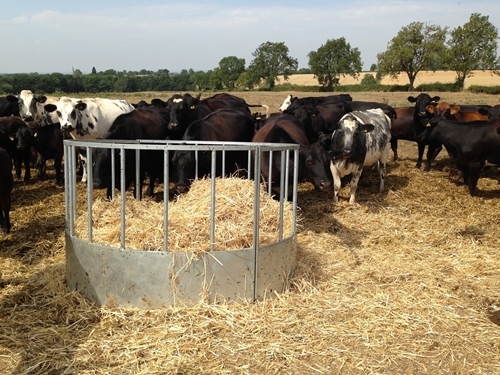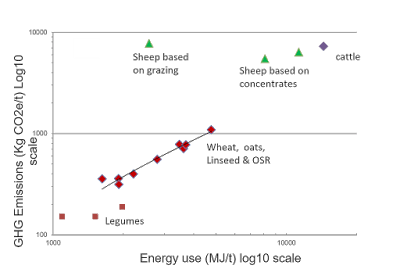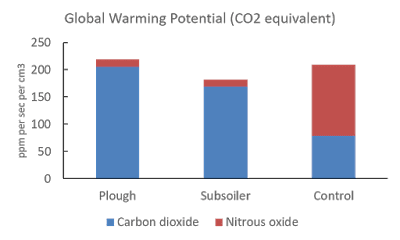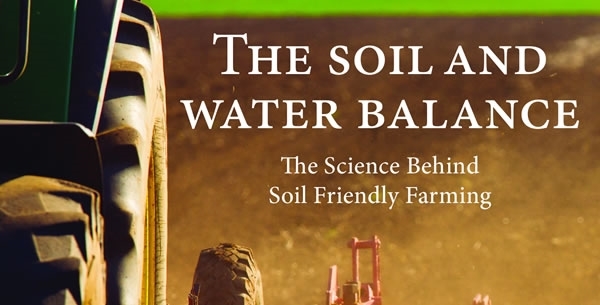
Drought conditions through the summer turned grass fields brown and made supplementary feeding of livestock, especially cattle, a necessity. In our local mixed farming area, various deals involving the transfer of straw from arable to livestock farms have taken place that would be unheard of in a normal year. Such a resolution is more difficult to reach outside mixed farming areas. But for everyone, this year's drought raises concerns about what a 'normal' year might be in future and how to build resilience into farming systems.
Another consideration is the contribution that those different farming systems make to climate change through greenhouse gas emissions. We explored this a while ago through a student project with Cranfield University, based on real input and production data from Loddington, and from three other local farms. Energy use is a major driver for greenhouse gas emissions across arable and livestock systems, although grass based systems with lower growth rates and production tend to buck the trend because of higher methane emissions. This issue is being addressed by our partners in the Sustainable Intensification research Platform's farm network at North Wyke and Henfaes, and some of our own most recent research into multiple benefits from grass leys will also contribute to this developing knowledge base.

In arable systems, especially if excluding legumes, energy use is a clear driver of greenhouse gas emissions. Around 60% of these are associated with fertiliser use, but differences between farms result from different levels of field operation associated with tillage practice. A no-till approach results in substantially lower carbon dioxide emissions than crop establishment approaches involving cultivation. Our research has identified other benefits of a no-till approach, but it is difficult to adopt on clay soils, and there are concerns that reductions in carbon dioxide emissions associated with fewer machinery passes may be offset by higher nitrous oxide emissions associated with waterlogged soil.

We are in the early stages of exploring this issue as part of the EU funded SoilCare project. As part of our contribution to this project, we have set up a compaction alleviation experiment in which we compare the use of the plough and a low disturbance subsoiler for reducing soil compaction with direct drilling without any alleviation. Our initial monitoring of greenhouse gas emissions in the spring suggested that there were higher nitrous oxide emissions from the no-till soil without compaction alleviation, but based on the CO2 equivalent for Global Warming Potential, this resulted in all treatments being comparable in terms of their impact. We need to gather further data in the coming year to establish whether this is really the case.

Get the inside track on soil and water research
Priced at just £9.95, our new book The Soil & Water Balance provides the inside track on soil and water research.
Presented in a Q&A style, much like last year’s popular Moorland Balance, this 100-page book looks at the problems and solutions on topics ranging from erosion and contamination, to the impact on songbirds and other wildlife.
Combining years of research at the GWCT's Allerton Project demonstration farm with tens of external scientific papers, this is a fascinating study of how farming can adapt to the challenges it currently faces.
Buy now >